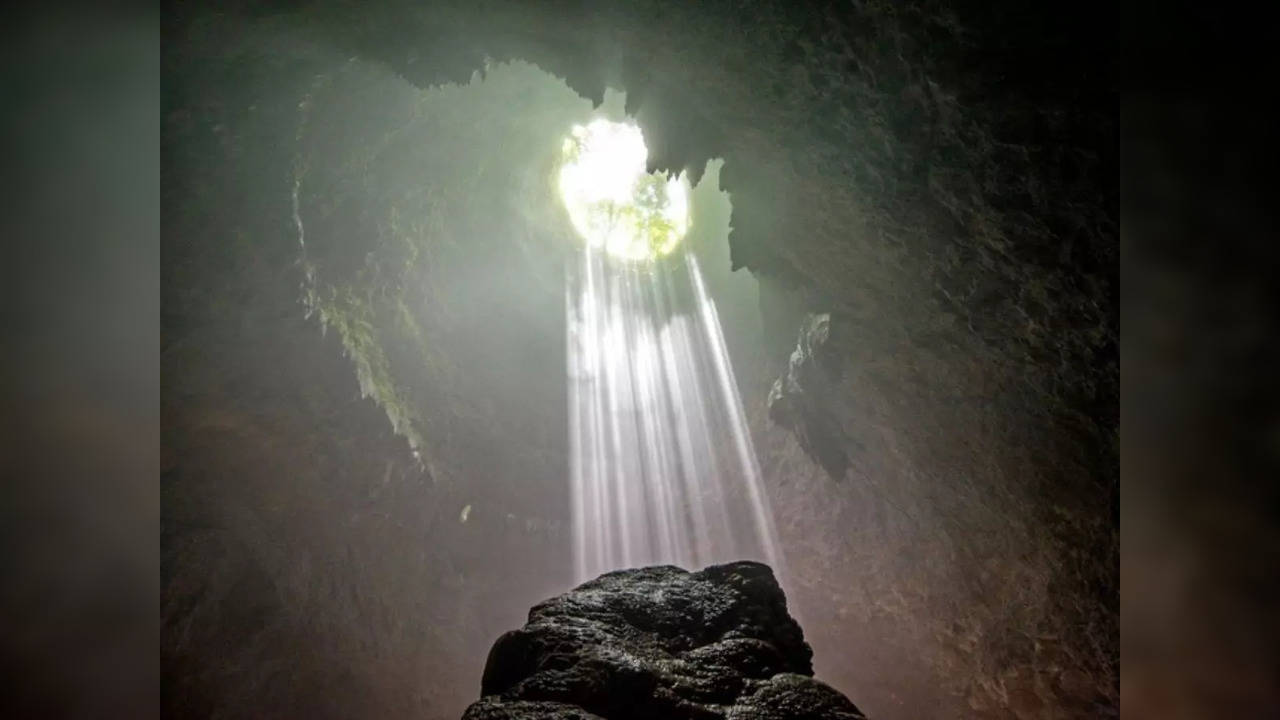Giant 630-feet-deep sinkhole hiding ancient forest discovered in China could house unknown species: Scientists
Chinese scientists have discovered an enormous sinkhole measuring 630 feet in depth in southern China’s Guangxi region and it’s unlike any other ground cavity known to science. The giant sinkhole is home to a well-preserved forest sitting hundreds of feet below the surface and possibly houses undiscovered species of fauna.

The 630-feet-deep sinkhole discovered in southern China is home to ancient trees | Representative image courtesy of iStock
Photo : iStock
KEY HIGHLIGHTS
- A team of cave experts descended into the depths of the 630-feet-deep sinkhole on Friday, May 6.
- The speleologists and spelunkers discovered three entrances to caves and ancient trees as tall as 131 feet inside the sinkhole.
- The dense undergrowth on the sinkhole floor reportedly reaches as high as a person's shoulder.
China sinkhole: Scientists have uncovered an enormous sinkhole measuring 192 metres or about 630 feet in depth in southern China’s Guangxi region and it’s unlike any other ground cavity known to science.
The giant sinkhole does not have a dark, empty pit but, in fact, houses a well-preserved forest several hundreds of feet below the surface.
Live Science reported that a team of specialists rappelled down the sinkhole on Friday, May 6, and found three cave entrances in the chasm.
In an astounding discovery, the team of speleologists and cave explorers stumbled upon ancient trees up to 131 feet tall, extending towards the filtered sunlight coming from the mouth of the sinkhole.
The Mandarin word for such colossal sinkholes is “tiankeng”, or “heavenly pit” and the bottom of the sinkhole appears to be a paradise for a wide array of plant life.
“I wouldn't be surprised to know that there are species found in these caves that have never been reported or described by science until now,” Zhang Yuanhai, a senior engineer with the Institute of Karst Geology, told Xinhua News Agency.
Other scientists report that the dense undergrowth on the floor of the 1,004-feet-long and 492-feet-wide sinkhole reached as high as a person’s shoulders.
“Not only do sinkholes and caves offer refuge for life, they are also a conduit to aquifers, or deep stores of underground water,” Veni told Live Science. “Karst aquifers provide the sole or primary water source for 700 million people worldwide,.”
The discovery of the sinkhole in itself, however, is far from an anomaly because the southern Chinese landscape is characterised by a geographical feature called ‘karst topography’.
Karst landscapes are no strangers to these behemoth sinkholes, courtesy of acidic rainwater that erodes the limestone rock. It is gradually worn away by dissolution as the water seeps into rocks, widening it into tunnels.
Eventually, the ceiling gives way to open up sinkholes such as this one.
The cave-rich karst and pseudokarst landscape (which features caves formed by factors other than dissolution such as wind or volcancs) together account for close to 20% of the world’s landmass.
Trending:
End of Article
Subscribe to our daily Newsletter!
Related News





Viral Video: Lifesize Chocolate Flamingo Floatie Looks Too Real & Too Good To Eat. Watch

UP Bride Calls Off Wedding as Groom Fails to Recite Table of Two | Watch

Catfight, Cuss Words & Threats: Viral Vada Pav Girl Gets Into Ugly Fight On Delhi Road | Video

Viral Video: Comedian's Epic Skit Exposes How Flight Attendant First Class vs Economy. Watch

Meet Phoolchand, Paan Seller Who Wears Gold Worth Rs 2 Crore








